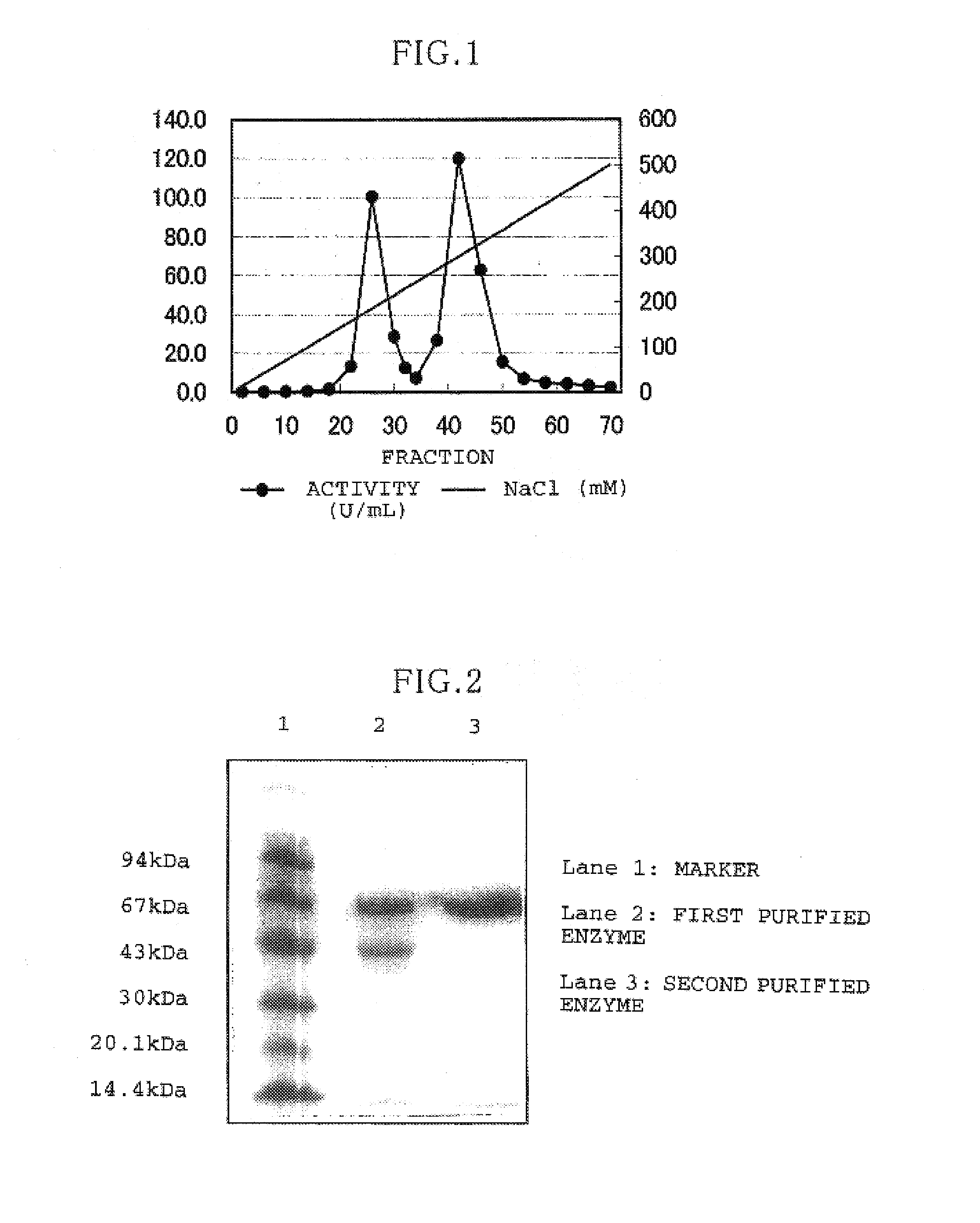Process for producing glucose dehydrogenases
a technology of glucose dehydrogenase and process, which is applied in the direction of biochemistry apparatus and processes, microorganisms, etc., can solve the problems of poor thermostability and substrate specificity, the difficulty of considering industrial applications for ks1 strains to produce cygdh in large quantities
- Summary
- Abstract
- Description
- Claims
- Application Information
AI Technical Summary
Benefits of technology
Problems solved by technology
Method used
Image
Examples
example
[0051]In the following, concrete examples of the preparation process described above will be described while the fact that 2 species of GDH are obtained will be demonstrated through this example.
[0052]Burkholderia cepatia KS1 Strain>
[0053]The chromosomal DNA from the Burkholderia cepatia KS1 strain was prepared following a process of the art. That is to say, first, the KS1 strain was agitated overnight at 34° C., using the TL liquid medium (polypeptone=10 g, yeast extract=1 g, NaCl=5 g, KH2PO4=2 g, glucose=5 g; 1 L total volume, pH 7.2). The grown cells were recovered with a centrifuge. These cells were suspended in a solution containing 10 mM NaCl, 20 mM Tris-HCl (pH8.0), 1 mMEDTA, 0.5% SDS, and 100 μg / mL proteinase K, and treated for 6 hours at 50° C. After the same quantity of phenol-chloroform was added to this suspension and agitated for 10 minutes at room temperature, the supernatant was recovered with a centrifuge. Sodium acetate was added thereto so as to obtain a final conc...
PUM
| Property | Measurement | Unit |
|---|---|---|
| molecular weight | aaaaa | aaaaa |
| molecular weight | aaaaa | aaaaa |
| molecular weight | aaaaa | aaaaa |
Abstract
Description
Claims
Application Information
 Login to View More
Login to View More - R&D
- Intellectual Property
- Life Sciences
- Materials
- Tech Scout
- Unparalleled Data Quality
- Higher Quality Content
- 60% Fewer Hallucinations
Browse by: Latest US Patents, China's latest patents, Technical Efficacy Thesaurus, Application Domain, Technology Topic, Popular Technical Reports.
© 2025 PatSnap. All rights reserved.Legal|Privacy policy|Modern Slavery Act Transparency Statement|Sitemap|About US| Contact US: help@patsnap.com

